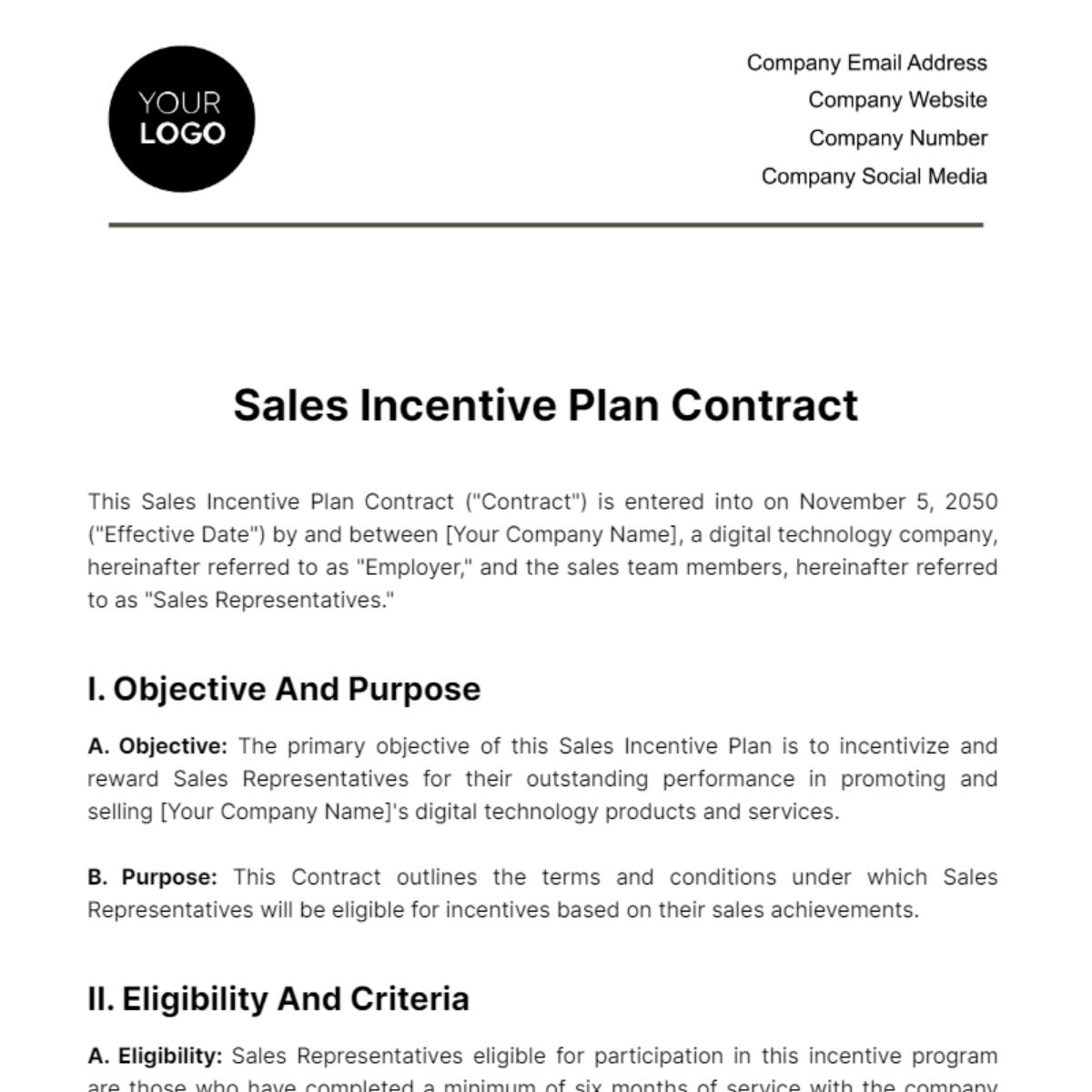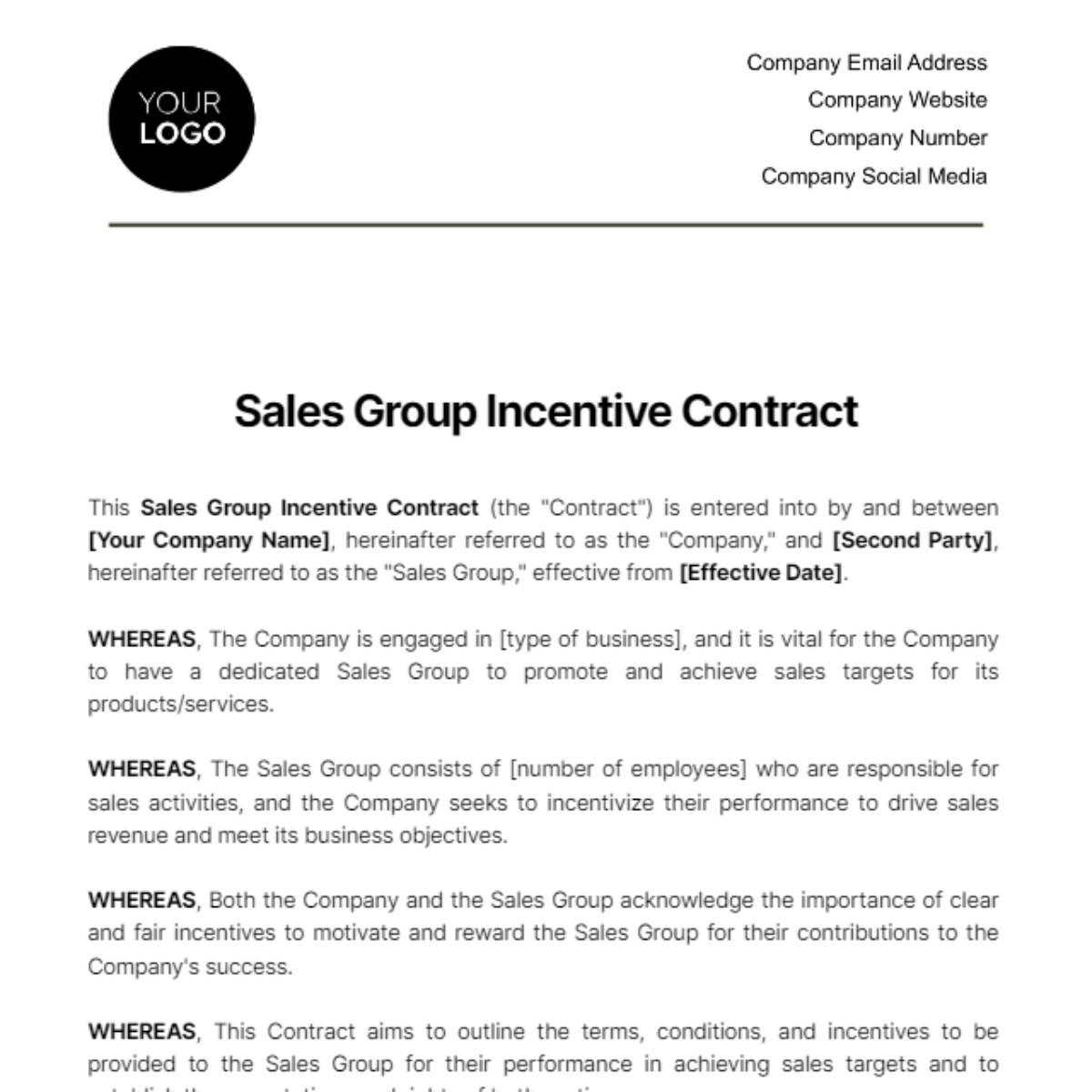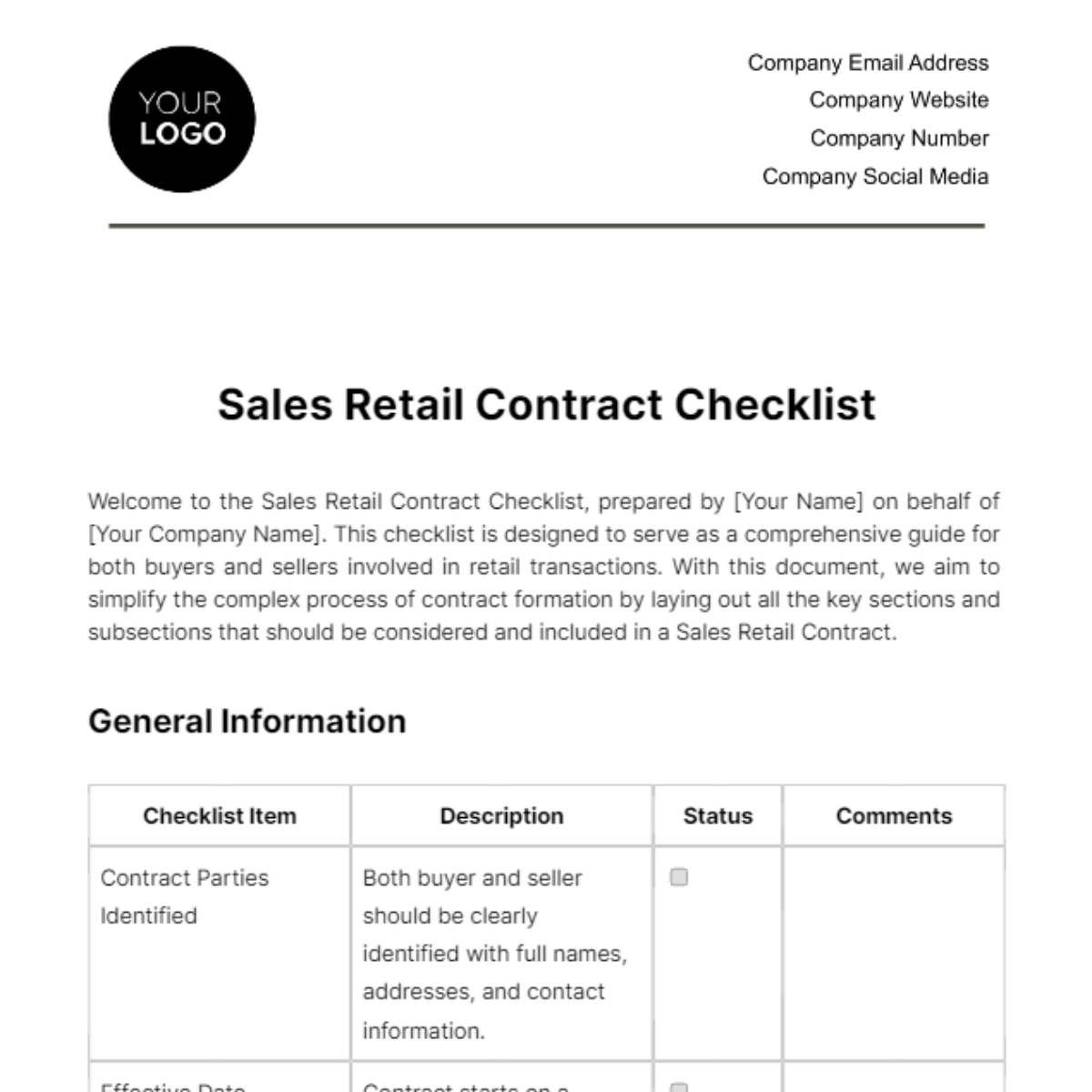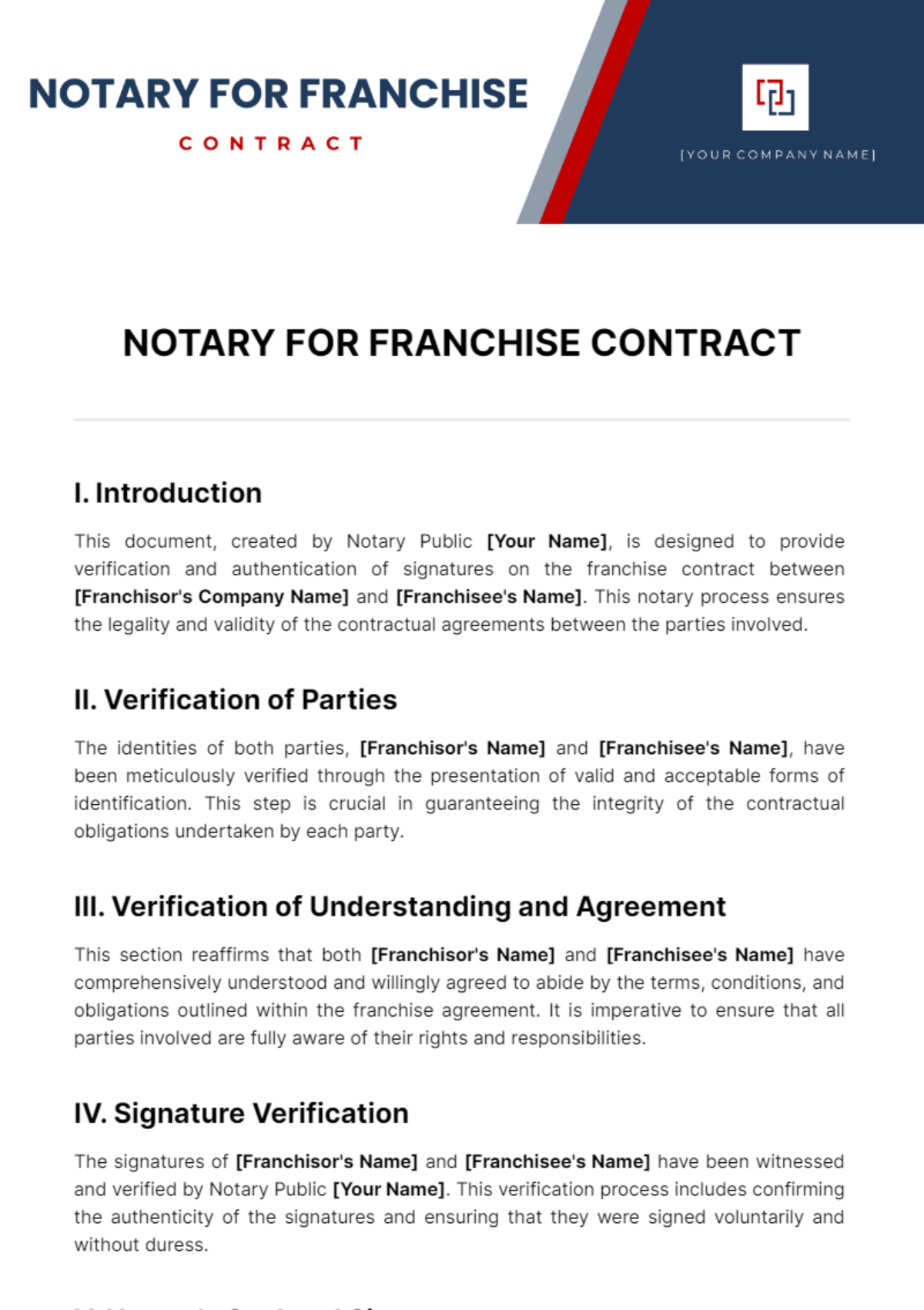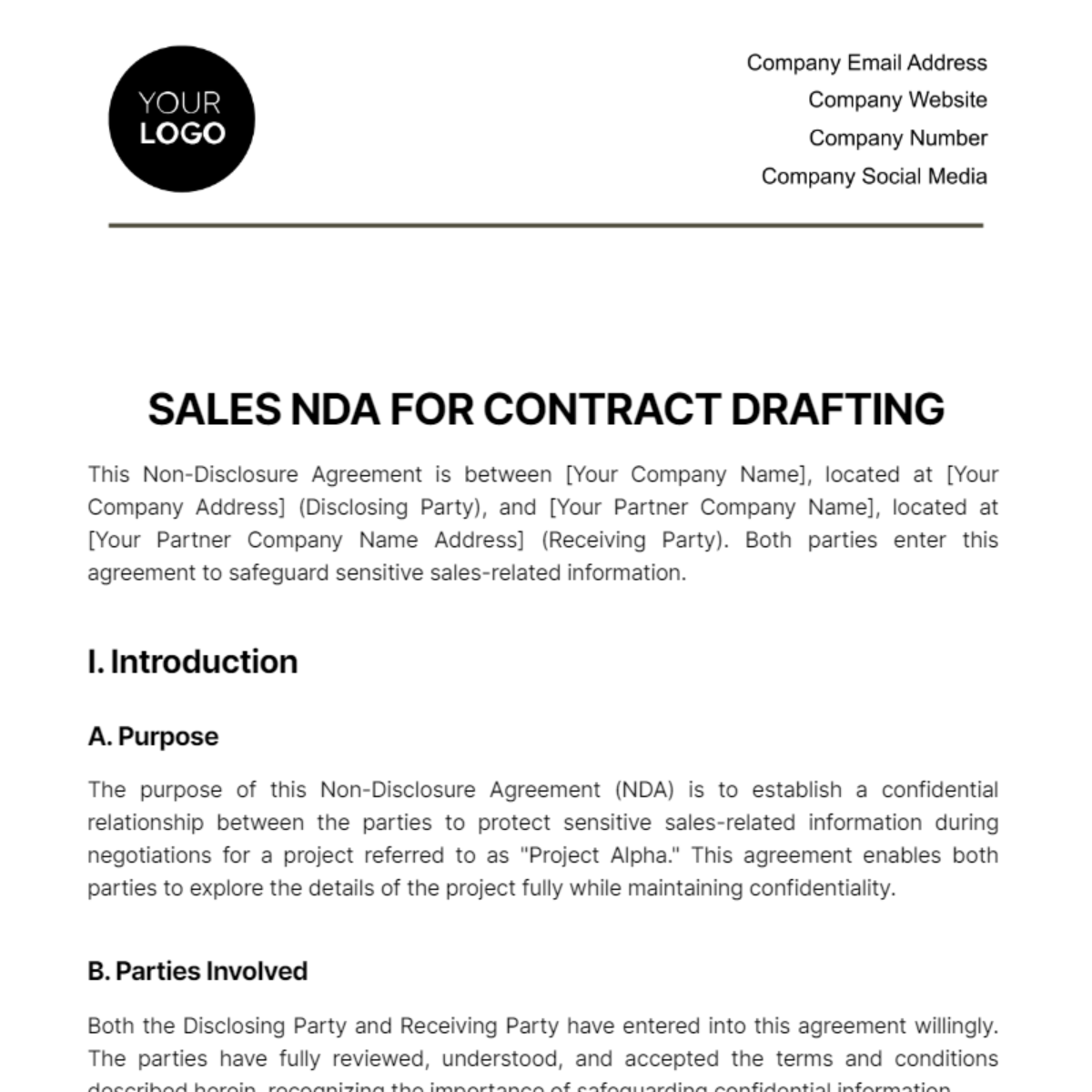Sales Financial Implications of Contracts
I. Executive Summary
A. Purpose of the Analysis
1.Strategic Decision-Making
The primary purpose of this analysis is to facilitate strategic decision-making within the organization. It serves as a financial compass that guides the identification of profitable opportunities and the mitigation of financial risks associated with sales contracts. By gaining a comprehensive understanding of the financial implications, the organization can make informed choices that align with its strategic objectives.
2.Optimization of Revenue Streams
This analysis aims to optimize revenue streams by identifying the most lucrative contract types and pricing strategies. It provides insights into the revenue potential of different contracts, helping the organization focus on those that offer the highest returns. By optimizing revenue, the organization can drive growth and sustainability.
3.Cost Management and Efficiency
Effective cost management is another central goal. The analysis pinpoints areas where operational efficiency can be enhanced to reduce costs associated with contract fulfillment. By minimizing cost structures, the organization can maximize profitability and resource allocation.
4.Financial Resilience and Risk Mitigation
One of the core purposes is to enhance financial resilience and risk mitigation. The analysis assesses the financial risks associated with contracts and provides strategies for risk mitigation and contingency planning. This promotes financial stability and ensures the organization can withstand unexpected challenges.
5.Long-Term Financial Sustainability
A key purpose is to evaluate the long-term financial sustainability of contract-based sales. By understanding how contracts impact the organization's financial health over extended periods, the analysis assists in creating financial strategies that support sustainable growth and resilience in the face of economic fluctuations.
6.Informed Decision-Making
Ultimately, the analysis aims to empower the organization with data-driven insights. It provides decision-makers with the information needed to make informed choices about the pursuit of specific contract types, pricing strategies, and risk management approaches. Informed decision-making is the cornerstone of financial success and growth.
7.Scope of the Analysis
This analysis will encompass a wide range of financial considerations, including revenue projections, cost structures, profitability assessment, cash flow analysis, and long-term financial sustainability. It will cover both existing contracts and the potential financial implications of entering into new agreements.
II. Introduction
A. The Role of Contracts in Sales
Contracts are the foundation of sales transactions, and their financial implications are profound. Sales contracts determine the revenue generated, the costs associated with fulfilling agreements, and the overall profitability of the organization. They also impact cash flow, as they dictate the timing of payments and expenses.
B. Objectives
The primary objectives of this analysis are to:
Evaluate the financial impact of existing sales contracts.
Assess the revenue-generating potential of different contract types.
Analyze the cost structures associated with fulfilling contracts.
Determine the profitability of contract-based sales.
Evaluate the impact of contracts on cash flow and financial sustainability.
III. Revenue Projections
A. Forecasting Revenue from Contracts
This section will focus on revenue projections generated from existing and potential sales contracts. It will consider factors such as contract value, sales volume, pricing strategies, and recurring revenue streams. Projections will be based on historical data, market analysis, and potential growth scenarios.
B. Revenue Diversification
Diversification of revenue sources is crucial for financial stability. This part of the analysis will assess how contracts contribute to diversifying revenue streams and reducing dependency on a few key clients or product lines.
C. Contract Duration and Revenue Stability
The duration of contracts significantly impacts revenue stability. This section will explore how the length of contracts, including short-term and long-term agreements, affects revenue predictability and sustainability.
IV. Cost Structures
A. Assessing Costs Associated with Contracts
Cost structures associated with fulfilling contracts play a vital role in financial implications. This analysis will break down the costs, including production costs, labor, materials, and any variable expenses directly linked to contract fulfillment.
B. Overhead Costs
In addition to direct costs, this section will assess the impact of overhead costs on profitability. Overhead costs may include administrative expenses, utilities, rent, and other fixed costs that indirectly affect contract economics.
C. Cost Variability and Profit Margins
The analysis will consider cost variability, assessing how changes in contract volume or complexity impact profit margins. It will explore strategies to maintain healthy profit margins in the face of changing contract dynamics.
V. Profitability Assessment
A. Determining Contract Profitability
Assessing profitability is a fundamental aspect of the financial implications of contracts. This section will focus on profitability ratios, including gross profit margin, net profit margin, and return on investment (ROI) associated with different types of contracts.
B. Break-Even Analysis
The analysis will include break-even analysis to determine the point at which contract revenue covers all costs. This analysis aids in understanding the financial thresholds for different contract scenarios.
VI. Cash Flow Analysis
A. Cash Flow Impact of Contracts
Cash flow is a critical consideration in contract-based sales. This section will assess the cash flow implications of different contract types, taking into account payment terms, invoicing cycles, and cash flow forecasting.
B. Working Capital Requirements
Working capital requirements are often influenced by the timing of contract-related expenses and revenue. The analysis will address strategies to manage working capital effectively and ensure financial stability.
C. Long-Term Financial Sustainability
Contracts have long-term implications for financial sustainability. This section will evaluate how contracts impact the organization's financial health over an extended period, considering factors such as debt management, investments, and reserves.
VII. Risk Analysis
A. Risk Assessment
Risk is an inherent component of sales contracts. This section will assess the financial risks associated with different contract types, including credit risk, market risk, legal risk, and operational risk. It will outline strategies for risk mitigation and contingency planning.
B. Contract Default Scenarios
The analysis will consider potential default scenarios and their financial consequences. It will provide insights into preparing for unexpected challenges and ensuring financial resilience.
VIII. Recommendations
A. Informed Decision-Making
1.Customized Contract Strategies
Informed decision-making allows for the customization of contract strategies. This entails tailoring approaches based on the financial implications of specific contract types. The analysis provides insights into which strategies align with financial goals, offering the flexibility to adapt contract structures and terms accordingly.
2.Pricing Optimization
In the pursuit of informed decision-making, pricing strategies play a vital role. The analysis guides the organization in optimizing pricing based on the expected revenue and cost structures of different contracts. It ensures that prices reflect the value delivered and contribute to profitability.
3.Resource Allocation
Resource allocation is a fundamental aspect of contract management. Informed decision-making helps determine how resources are allocated to fulfill contracts. It ensures that resources are allocated efficiently to maximize profitability and meet contractual obligations without overextending operational capacities.
4.Investment in Value-Added Services
Recognizing the financial implications of contracts empowers the organization to invest in value-added services strategically. By understanding how value-added services contribute to revenue and profitability, the organization can allocate resources to enhance client satisfaction and increase the lifetime value of contracts.
5.Risk Management
Informed decision-making is intrinsically tied to risk management. The analysis provides data on the financial risks associated with contracts, allowing the organization to develop risk mitigation strategies and contingency plans. It ensures that the organization is prepared to address potential challenges proactively.
6.Alignment with Strategic Goals
Ultimately, informed decision-making ensures alignment with the organization's strategic goals. It helps in determining which contracts and strategies support those goals, whether they involve market expansion, customer retention, or revenue diversification. This alignment fosters a clear path to strategic growth and financial success.
7.Continuous Monitoring and Adaptation
Informed decision-making extends beyond the initial analysis. It includes continuous monitoring and adaptation of contract strategies based on real-time data and changing market conditions. The organization can make agile decisions to capitalize on emerging opportunities and address evolving financial risks.
IX. Conclusion
A. Summary of Financial Implications
1.Revenue Projections
The revenue projections present a promising outlook for the organization. The analysis reveals that sales contracts, when strategically pursued, offer substantial revenue potential. The diversified revenue streams from various contract types provide resilience against market fluctuations. Moreover, revenue projections account for both existing and potential contracts, indicating a positive growth trajectory.
2.Cost Structures
The cost structure assessment underscores opportunities for cost optimization. By identifying areas where operational efficiency can be enhanced, the organization can reduce variable and fixed costs, ultimately improving profitability. The analysis also highlights the cost variability associated with changes in contract volume, offering strategies to maintain healthy profit margins.
3.Profitability Assessment
The profitability assessment indicates that contracts have the potential to contribute significantly to the organization's financial success. The analysis reveals strong gross profit margins, net profit margins, and return on investment (ROI) for various contract types. These favorable profitability ratios affirm the value of contract-based sales as a cornerstone of financial health.
4.Cash Flow Analysis
Cash flow analysis is essential for maintaining financial stability. The assessment shows that contracts, when managed effectively, positively impact cash flow. The timely receipt of payments and the structured invoicing cycles contribute to steady cash flow. Additionally, the working capital requirements are well-managed, ensuring financial resilience.
5.Risk Analysis
Risk analysis is a pivotal aspect of the financial implications. The assessment reveals potential financial risks but also offers proactive risk mitigation strategies. This comprehensive understanding of financial risks, including credit risk, market risk, legal risk, and operational risk, equips the organization with tools to address uncertainties and safeguard its financial interests.
6.Informed Decision-Making
The collective findings of this analysis empower the organization with informed decision-making capabilities. It ensures that the organization can tailor contract strategies, optimize pricing, allocate resources efficiently, invest in value-added services strategically, and manage risks proactively. Informed decision-making is the linchpin of financial strategy, aligning actions with strategic goals.
7.Long-Term Financial Sustainability
The analysis paints a picture of long-term financial sustainability. By understanding how contracts impact the organization's financial health over extended periods, the organization is poised for growth and resilience. It emphasizes the importance of debt management, investment strategies, and reserves to ensure long-term financial stability.
8.Continuous Monitoring and Adaptation
The final takeaway is the recognition of the importance of continuous monitoring and adaptation. The financial implications of contracts are dynamic, and the organization must remain agile. By monitoring real-time data and adapting strategies, the organization can seize emerging opportunities and address evolving financial risks.
The summary of financial implications provides a comprehensive understanding of how sales contracts impact the organization's financial health. It highlights the potential for revenue growth, cost optimization, profitability, healthy cash flow, effective risk management, informed decision-making, and long-term sustainability. These insights equip the organization to navigate the complexities of contract-based sales with confidence and resilience.



















